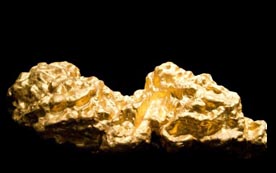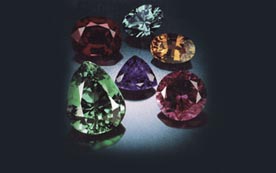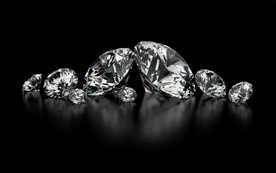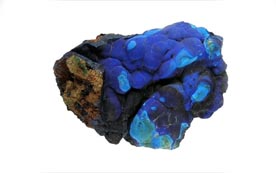Valuable Stones
11 Jun 2015- Details
- Written by Saonl
EMERALD
Beryl group
Color: Emerald green, light green, yellow-green, dark green Color of streak: White Mohs' hardness: 7-8 Specific gravity: 2.67-2.78 Cleavage; None Fracture: Small conchoidal, uneven, brittle Crystal system : Hexagonal (trigonal); hexagonal prisms, columnar Chemical composition : Al^Be^ (SiR0,s) aluminium beryllium silicate Transparency: Transparent to opaque Refractive index: 1.576-1.582 Double refraction : 0.006 Dispersion: 0.014 Pleochroism : Definite; green, blue-green to yellow-green Absorption spectrum : 6835, 6806 6620, 6460, 6370, (6060), (5940) 6300-5800, 4774, 4725 Fluorescence: Usually none The name emerald derives from the Greek Smaragdos, which in turn came perhaps from the Persian. It means "green stone" and, in ancient times, referred not only to emeralds, but also probably to most green stones. Emerald, together with aquamarine and beryl, belongs to the beryl group, being the most precious of the group. Its green is incomparable, and isj therefore called "emerald green" (not only in mineralogy). The pigment is chrome, sometimes vanadium. The color is very stable against light and heat, and only alters at 1292-1472cF/700-8003C. Only the finest qualities are transparent. Often the emerald is clouded by inclusions (liquid or gas bubbles, healing cracks and foreign crystals). These are not necessarily classified as faults, but are evidence as to the genuineness of the stone as compared with synthetic and other imitations. The expert refers to these inclusions as a "jardin" (garden). The most desired color is a deep green which is more valuable, even with inclusions, than a pale and clean quality. Distribution of color is often irregular, in spots or stripes. The luster is usually vitreous. The physical properties, especially the specific gravity and double refraction as well as pleochroism, vary according to source area. All emeralds are brittle and combined with internal stresses, sensitive to pressure; care must be taken in heating them. They are resistant to chemicals with the exception of fluoric acid. Emeralds are formed by rising magma and metamorphism. Deposits are therefore found mainly in or near pegmatite veins. Mining is nearly exclu¬sively from host rock, where the emerald has grown into small veins or or walls of cavities. Alluvial mining would hardly be possible as the specific gravity is near that of quartz. Anyway secondary deposits, produced by weathering or other decomposition, are rarely formed.
DIAMOND
Color: Colorless, yellow, brown, sometimes green, blue, reddish, blackColor of streak : None possible Mohs' hardness: 10 Specific gravity: 3.47-3.55 Cleavage: Perfect Fracture: Conchoidal to splintery Crystal system : Isometric (cubic); mainly octahedrons, also rhombic dodecahedrons, cubes, twins, plates Chemical composition : C, crystallized carbon Transparency: Transparent Refractive index: 2.417-2.419 Double refraction : None, often anomalous Dispersion: 0,044 Pleochroism: None Absorption spectrum; Colorless to yellow:478p, 4650, 4510, 4350, 4015,4230, 4155, 3900 Blue-green : (5370), 5040, (4980) Fluorescence: Variable; Colorless and yejlow: mostly blue Brown and green: often green The name diamond refers to its hardness (Greek - Adamas, unconquerable). There is nothing comparable to it in hardness; it is therefore nearly irnperisli-able. Its cutting resistance is 140 times greater than that of corundum. However the hardness of a diamond is different in the individual crystal faces, This allows one to cut diamond with diamond (or diamond powder, in which -according to statistical probability - various diamond hardnesses occur). Care has to be taken during mounting because of perfect cleavage. Its very strong luster enables the experienced eye to differentiate between a diamond and its imitations. Generally it is not very sensitive to chemical attack. Only chromic sulphuric acid can transform it at 392oF/200°C to carbon dioxide. High temperatures induce etchings on the facets and care must be taken during soldering! X-rays are not transmitted through diamonds (in contrast to diamond-like minerals and synthetics). During the last thirty years it has been recognized that there are various types of diamond which differ from each other in their absorption spectra, fluorescence, electric conductivity, and cleavage. Today science differentiates between type la, Jb, JIa and lib. This is of little importance to the trade, but assists the cutter. The optical properties of diamond arc exceptional: they make the stone the Jang of gems. Diamond has been used for adornment since very early times.
SAPPHIRE
Corundum group
Color: Blue in various hues, colorless, pink, orange, yellow, green, purple, black Color of streak: White Mohs' hardness: 9 Specific gravity: 3.99-4.00 Cleavage: None Fracture: Small conchoidal, uneven, splintery Crystal system : Hexagonal (trigonal); dipyramidal, barrel-shaped, tabloid-shaped Chemical composition: A!aO3 aluminium oxide Transparency: Transparent, opaque Refractive index: 1.766-1.774 Double refraction.—0,008 Dispersion: 0.018 Pleochroism ; Blue ; definite; datk blue, green-biue Yellows weak; yellow, light yellow Green ; weak; green-yellow, yellow Purple; definite; purple, light red Absorption spectrum : Blues, from Sri Lanka : 4710. 4600, 4550, 4500 3790 Yeltows: 4710, 4600, 4500 Greens: 4710, 4600-4500 Fluorescence: Blues: (purple) none Yellows from Sri Lanka : weak; orange Colorless: orange-yellow or purple The name sapphire (Greek - blue) used to be applied to various stones. In antiquity and as late as the Middle Ages, the name sapphire was understood to mean what is today described as lapis lazuli. Around 1800 it was recog¬nized that sapphire and ruby are gem varieties of corundum. At first only the blue variety was called sapphire, and corundums of other colors (with the exception of red) were given special, misleading names, such as "Oriental peridot" for the green variety or "Oriental topaz" for the yellow type. Today corundums of all colors except red are called sapphires. Red varieties are called rubies (p. 82). The various colors of sapphire are qualified by descrip¬tion, i.e. yellow sapphire, green sapphire. Sapphire without additional qualification refers to blue corundum. Orange pink sapphire is called Pad-paradschah (Sinhalese for "Lotus Flower") (7). There is no definite demarcation between ruby and sapphire. Light red, pink or violet corundums are usually called sapphires, as in this way they have individual values in comparison with other colors. If they were grouped as rubies, they would be stones of inferior quality. Coloring pigment in blue sapphire is iron and titanium; and in violet stones, vanadium. A. small iron content results in yellow and green tones; chrome produces pink. The most desired color is pure cornflower blue. Hardness is the same as ruby and also differs in different directions (an important factor in cutting). There is no fluorescence characteristic for all! sapphires. Tt varies according to color and source area. See also p. 88. 1 Sapphire, oval. 5.73ct, Thailand 2 Star sapphire, 9.46ct, Burma 3 Sapphire, brilliant cut, 2.81ct 4 Sapphire, six faceted stones, together 2.34ct, Tanzania 5 Sapphire, oval, 1,62ct, Sri Lanka 6 Sapphire, drop, 6.09ct 7 Sapphire, yellow, Padparadschah 11.32ct. Sri Lanka 8 Sapphire, antique cut, 5.18ct 9 Sapphire, antique cut, 3.74ct 10 Sapphire, five crystal shapes The illustrations are 30% larger than the originals..
RUBY
Corundum Group
- Color: Varying red
- Color of streak : White
- Mohs' hardness; 9
- Specific gravity: 3.97-4.05
- Cleavage: None
- Fracture : Small conchoidal, uneven, splintery, brittle Crystal system : Hexagonal (trigonal)hexagonal prisms or tablets, rhombohedrons
- Chemical composition; Ala03, aluminium oxide
- Transparency: Opaque, translucent transparent
- Refractive index; 1.766-1,774 Double refraction:—0.0Q8 Dispersion: 0 018 Pleochrorsm:
- Strong; yellow-fed, Deep ruby-red Absorption spectrum: 6942, 6928 6680, 6592, 6100-5000, 4761T' 4750. 4685
- Fluorescence: Strong; ruby-red
Ruby is thus named because of its red color (Latin Rubens). It was not until about 1800 that ruby, as well as sapphire, was recognized as belonging to the corundum group. Before that date red spinel and garnet were also designated as ruby. The coloring pigment is chrome and, for brown hues, some iron additionally. The red color varies with the individual deposits, so it is not possible to deter¬mine the source area from the color, as each deposit yields various tones. The designation "Burma-ruby" or "Siam-ruby"' is erroneous, and refers more to quality than origin. The most desirable color is "pigeon's blood", pure red with a hint of blue. The distribution of color is often uneven, in stripes or spots. As a rough stone, ruby appears dull and greasy but, when cut, the luster can approach that of diamond. The hardest mineral after diamond, although only 1/140th as hard, it is seven times as hard as topaz, the next on Mohs' scale. However, the hardness varies in different directions, a fact that is made use of by the lapidary. Because of the great hardness, corundum which is unsuitable for jewelry purposes, is powdered and used as a cutting and polishing medium (i.e. emery). Ruby has no cleavage, but has certain preferred directions of parting. Because of its brittleness, care must be taken when cutting and setting. Inclusions are common. They are not indicative of lower quality, but show the difference between a natural and a synthetic stone. The type of inclusion (mineral, canals or other cavities), often indicates the source area. Included rutile needles produce a soft sheen (called silk) or, if cut en cabochon, the effect of a cat's eye (5) or the very desirable asterism - a six-rayed star (4) which moves over the surface when the stone is moved.

 beat
beat

 The choice of the wedding ring that will accompany the finger of the right hand forever is a very important case. What is the symbolization of a Wedding ring?? When the wedding ring established as accustom and by whom? First of all we must clearify that an Engagement ring and a Wedding ring is not the same. The engagement ring borned after 13th century when Pope Innokentios. The P declared that it should be a period between the engagement and the marriage.
The choice of the wedding ring that will accompany the finger of the right hand forever is a very important case. What is the symbolization of a Wedding ring?? When the wedding ring established as accustom and by whom? First of all we must clearify that an Engagement ring and a Wedding ring is not the same. The engagement ring borned after 13th century when Pope Innokentios. The P declared that it should be a period between the engagement and the marriage.







